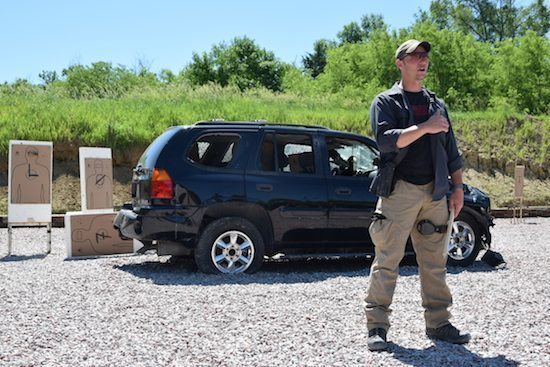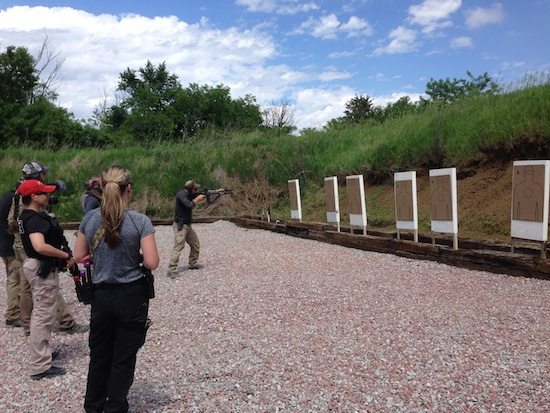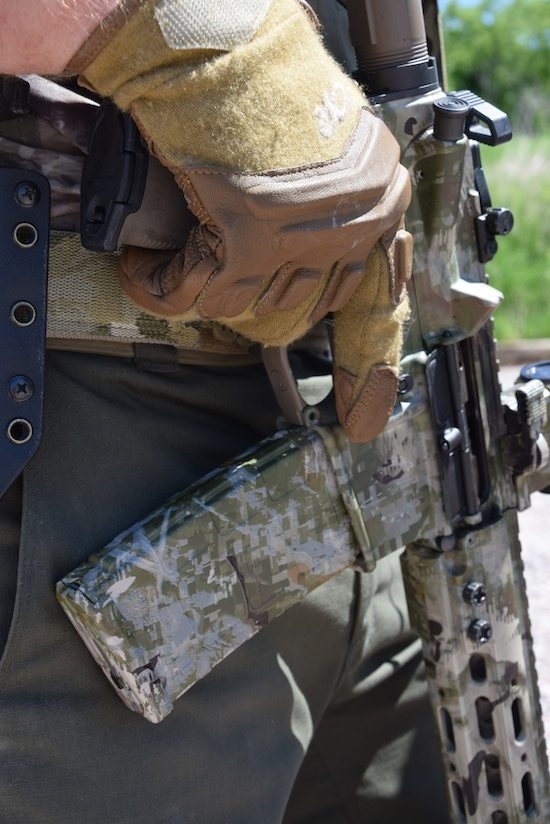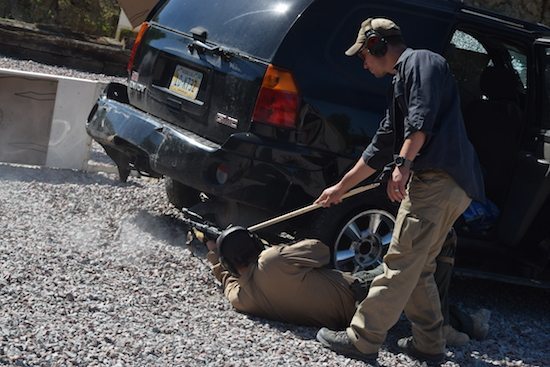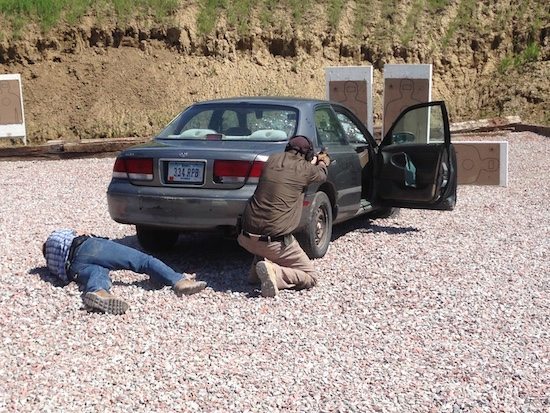By: Nathan Murr, Breach-Bang-Clear
Coffin or shield? Today Mad Duo Nate talks about your car as it relates to gunfighting and some lessons learned at our class last week. Make no mistake, there’s a lot more going on here than just taking cover behind engine blocks and axles.
Last week I had the opportunity to attend what is rapidly becoming Will Petty’s “signature” class: VCQB (Vehicle Close Quarters Battle). The class title is a pretty fair description of what was to be taught, and who better to teach it than a law enforcement officer who has countless hours in a cruiser? Having heard many good things about Mr. Petty and this particular class from others who have trained under his watchful eye, I was excited to make my way to Tekamah Nebraska to 88 Tactical’s training facility.
The training site is just about a remote as you can get in this country, hidden away in the rolling hills and beautiful vistas of farmland Nebraska. 88 Tactical has build a world class lodge, range and training area the likes of which is seldom seen in the defensive shooting circle.
After eating a breakfast prepped in the airy, newly refurbished lodge at the hub of things, fellow students and I stepped out on their crushed gravel range to zero rifles and check gear while chatting and prepping for the course. With several old beater cars at the ready, the focus of this course was to learn the tenets of shooting in, out, around, under, over and through automobiles. Although I’ve attended similar courses in the past, I was curious to see Will Petty’s take on vehicle shooting.
I could bore you with the play by play of each drill, but that would do little to convey the point of VCQB or what we learned in the class. As a cop (and not just a cop but a hard-core student of ballistics whose spent thousands of hours studying officer involved shootings) Petty has a unique perspective on what a car or truck really is. It can be your coffin or it can be your shield.
Understanding the anatomy of an automobile is as important as knowing where to place your shots on a human. Thus we spent a great deal of time shooting from the different positions of cover found on a vehicle. The common belief that only the wheels and engine provide cover was quickly shown to be merely a myth. Petty demonstrated this past any potential for skepticism. He did so by explaining the internal structure of the vehicle, and then having each student shoot it. We shot various parts of common vehicles with equally common handgun rounds; 9mm, 40 S&W, and .45 ACP were all placed on glass and metal, showing firsthand their limitations in both ball and duty loadings. We then also shot common rifle calibers such as 5.56, 7.62×39, and the mighty .308 Winchester. Previously, if you had told me that a .308 FMJ would fail to hit a target placed on the other side of the vehicle (a matter of only a few yards from the muzzle) I would have thought you were completely wrong.
Picking up an FAL type rifle to see for myself, I chose my shot carefully and was astonished at my failure! The same failure occurred with buckshot and 12 gauge slug. I really enjoyed this portion of the course, where time was spent on ballistics and how they pertain to vehicles.
Another takeaway from the course was the concept that a vehicle has certain points of advantage. For example, the idea that when fighting around a vehicle, the person who starts at the back of a car is more likely to prevail over their aggressor to the front. Petty has a very interesting explanation of “High Ground” and how it applies to the micro battlefield of a vehicle. He based this concept on information gleaned from video of hundreds of shootings that occurred around vehicles and scores upon scores of validating force-on-force drills (as well as his own experiences as a LEO).
The common thread that I found was that regardless if you are military, LEO or a regular citizen, all of these facts, and the techniques and drills used to address them, are universally applicable. Cars are cars, people are people, and guns are guns. Understanding the strengths as well as weakness of your own vehicle, those around you and the weapons involved can make a world of difference in a deadly encounter. Petty explained each aspect of VCQB in a very clear and logical way, avoiding anything that resembled speculation and focusing on facts. For this instructor, you could tell that he believes in his program completely and wants to see each of his students leave armed with increased knowledge and proficiency that might someday save their life.
Aside from the drills and more detailed sections of the class, each shooter validated the lessons to themselves by ending with a force on force shoot. Armed with masks and UTM guns, we paired against each other from opposite ends of a vehicle. By doing this, many of the aspects of VCQB were hammered home. By both the relief of success, and the sting of (mostly UTM markers!) defeat.
I would definitely recommend this class for all those who spend a lot of time around vehicles, which is pretty much everyone in America. We spend a great deal of time around automobiles, regardless whether it’s driving to work or walking through parking lots. They are a constant in our way of life and need to be addressed for the proper understanding. Without more people shooting a course like this, the rumors, myths and lore will continue to do all that carry a gun a great disservice. One that could someday cost you everything.

